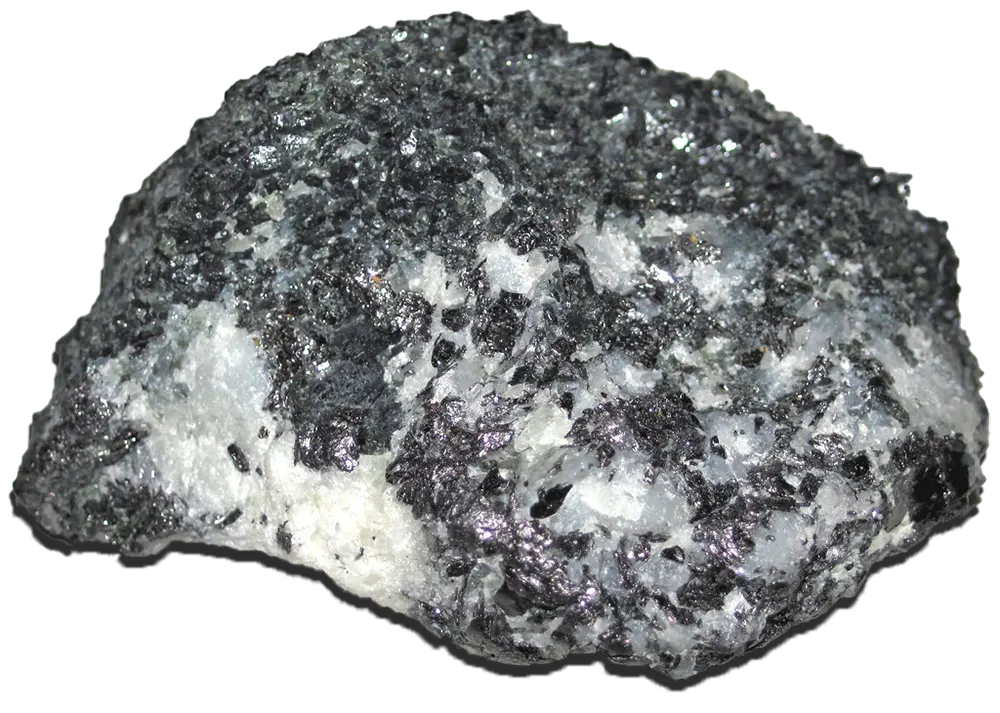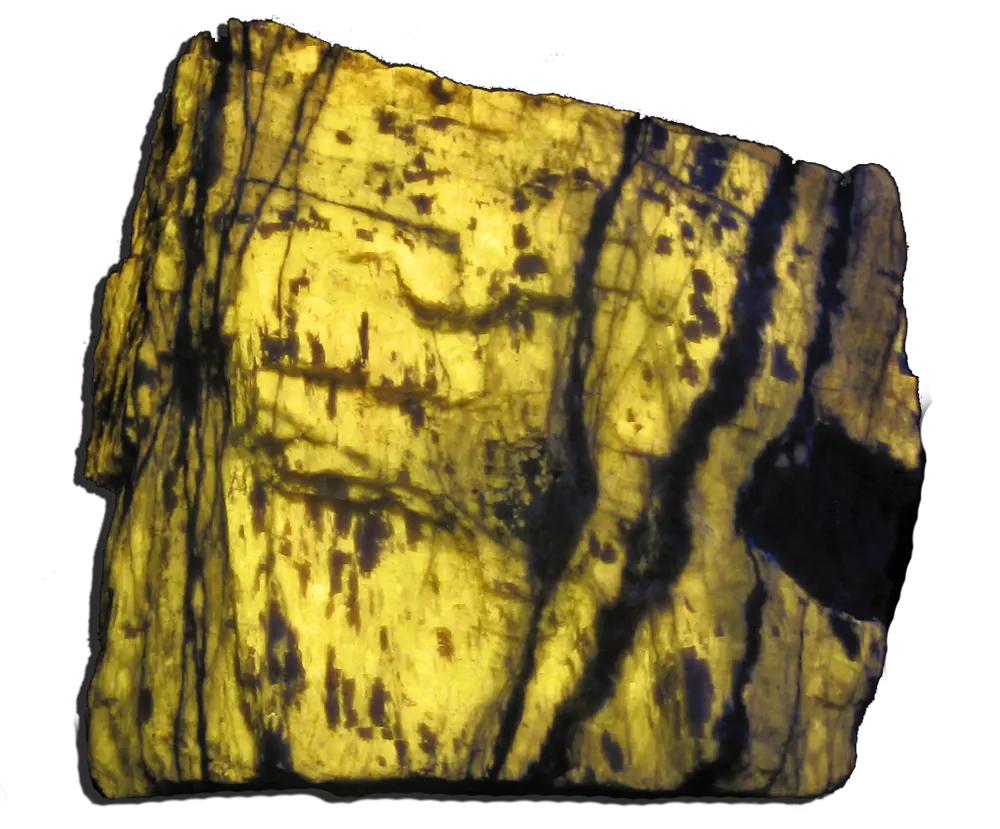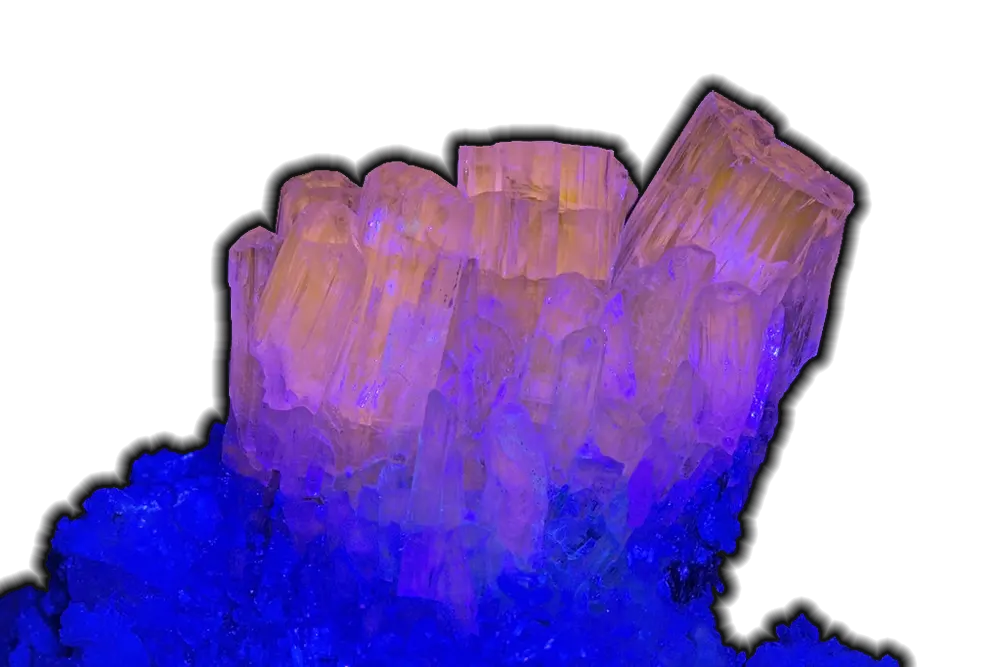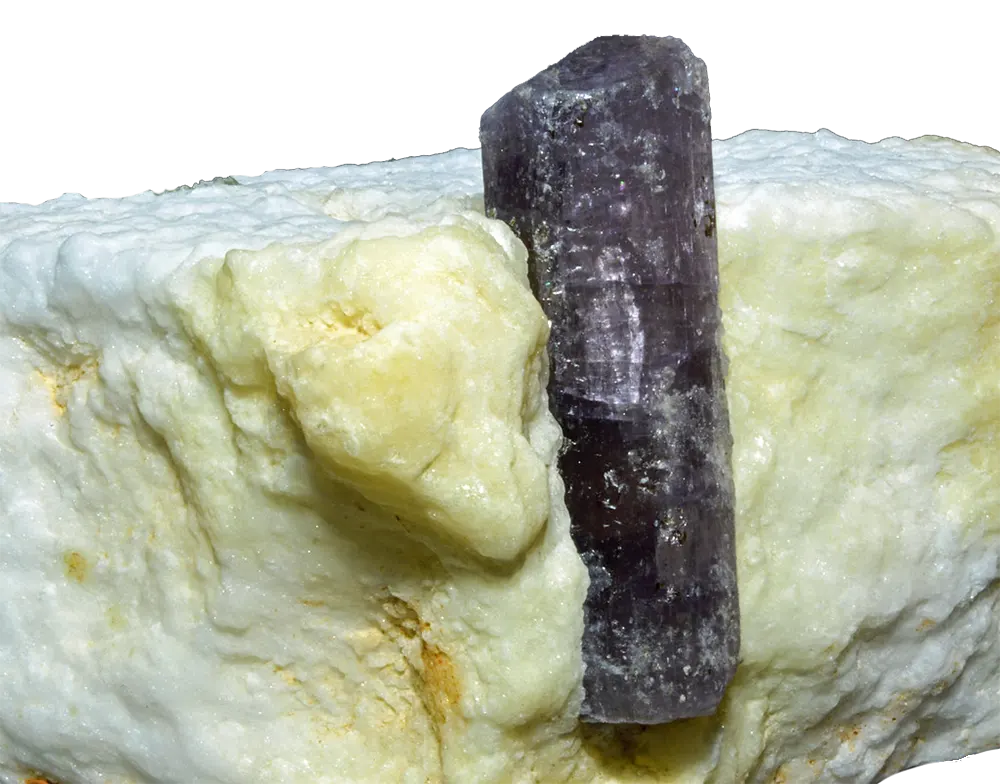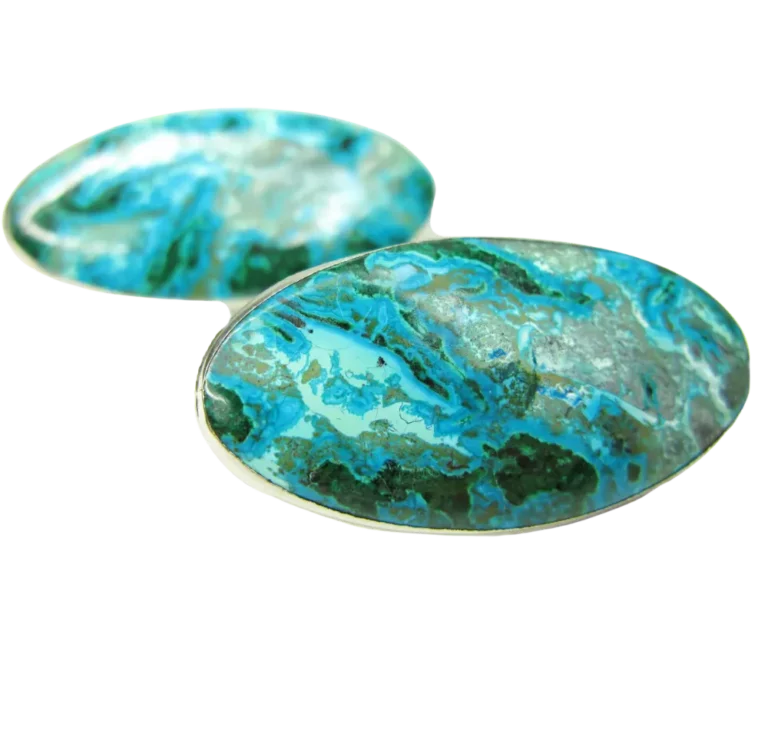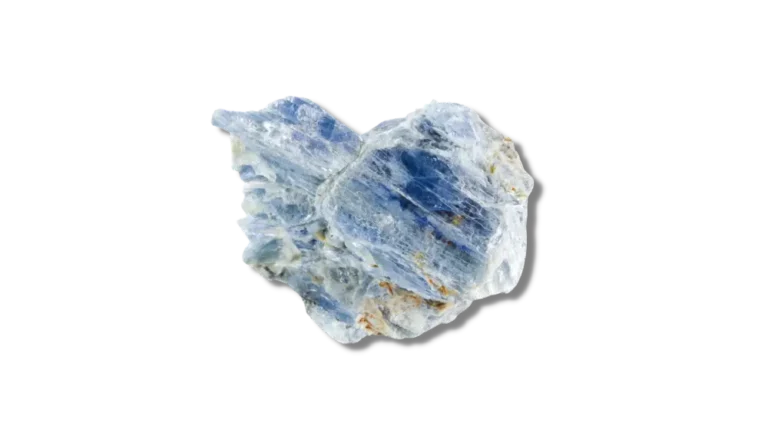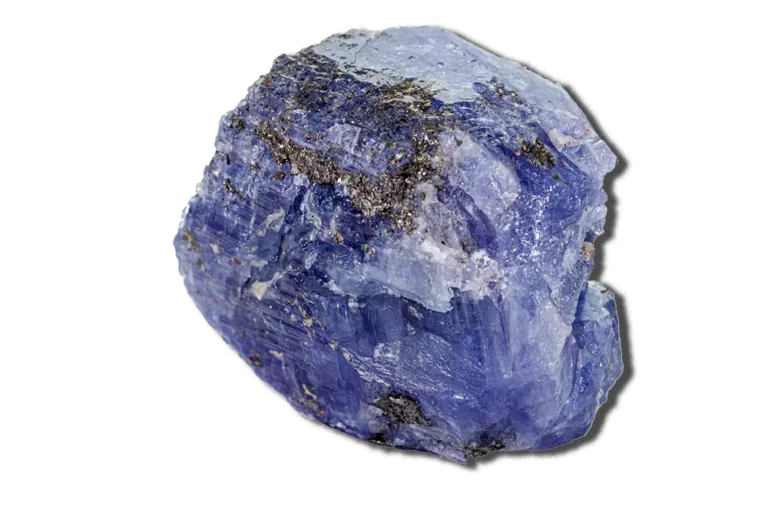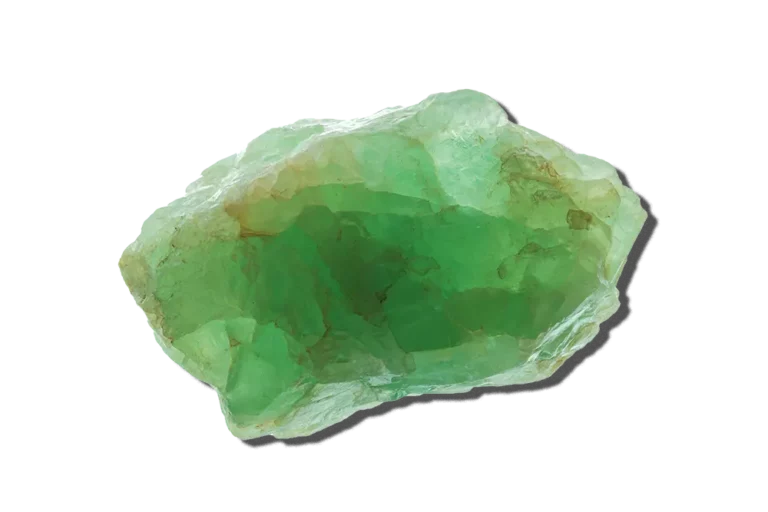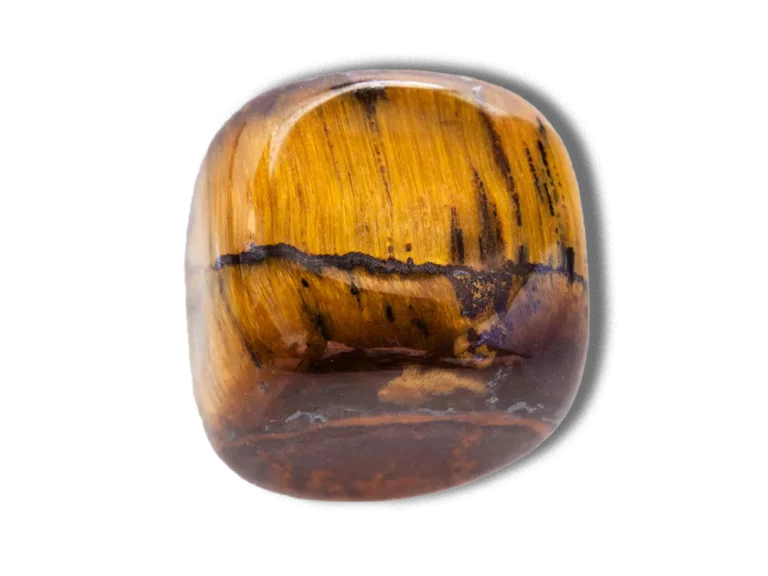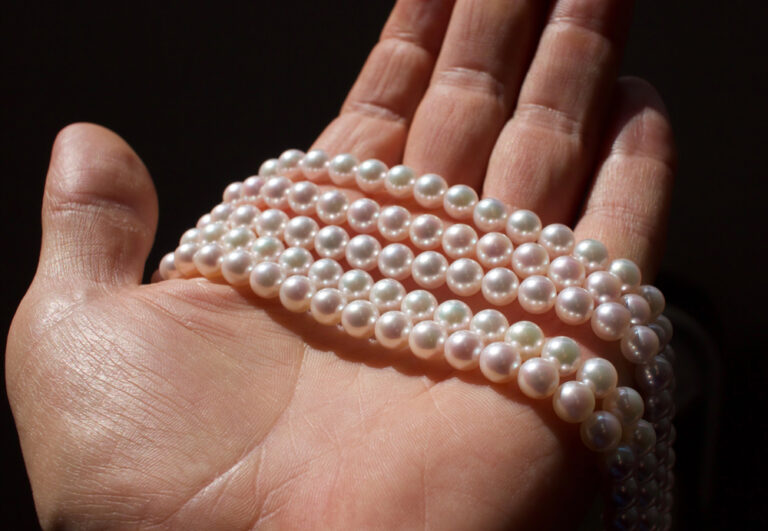Scapolite: Properties, Benefits & Meanings
Scapolite Overview
The Scapolite crystal is a variety of the alumino-silicate family of gemstones. It is a beautiful yellow-colored stone that shows a shaft-like crystal habit leading to stunning columns of the gem.
This article will take a look into the properties, meanings, and uses of the Scapolite gemstones.
What Is Scapolite Crystal?
This gemstone is a relatively unknown crystal that is said to symbolize passion and spirituality. It is primarily related to the Crown chakra and is more common among underground collectors who like to use it for its metaphysical abilities. However, its metallic sheen gives it some mainstream appeal as well.
Generally, the term “Scapolite” refers to crystals whose exact crystal chemistry and composition aren’t fully known.
More specifically, it is an intermediary series of the Scapolite group that lies between two adjacent series, Marialite and Meionite.
How Did Scapolite get its name?
In 1800, José Bonifácio de Andrada e Silva gave this stone its name in reference to its long prismatic crystal habit.
The root of Scapolite comes from the Greek word “ζκαποζ,” meaning shaft. It is one of the few gemstones that have a square cross-section.
It is pronounced [ skap–uh-lahyt ].
Other Names For Scapolite
This stone is known by many other names, such as:
How is Scapolite Formed?
Scapolite is primarily found in metamorphic rocks, especially in marbles. They are found in marble mines across the world.
In Norway, they are found in hornblende rocks. These rocks were originally feldspar-containing. However, feldspar is gradually replaced by scapolite minerals due to various chemical processes.
Various igneous rocks like Gabbro and Diabese also show this process in which the feldspar is gradually replaced by Scapolite, mainly due to the presence of chlorine.
Scapolite Appearance
Scapolite shows a variety of colors in nature. It can occur as a red, orange, yellow, purple, pink, or white crystal.
The color of these stones appears due to a wide range of ions such as Cl, CO-23, or SO-24 present within the spaces of the crystal structure. The gemstone is structured such that it has a square cross-section and deposits in the form of a cuboid.
Scapolites can occur with chatoyancy, but they are pretty rare and hard to obtain. They show cat’s eye chatoyancy in pink, colorless, and violet stones. However, some rare specimens may also show 4-star chatoyancy.
This beautiful gemstone fluoresces in UV light. When exposed to ultraviolet radiations, various specimens from Sri Lanka, Myanmar, and East Africa glow a yellow-orange or yellow-green color.
Other Members of the Scapolite Group
Marialite
Marilalite is a member of the Scapolite group that contains a high amount of Lead and Beryllium. It shows multiple colors, including white, orange, violet, and red.
Gerhard com Rath named Marialite after his wife in 1866. The chemical formula for this stone is “Na4Al3Si9O24Cl,” and it shows a tetragonal crystal system.
It has a Resinous-Pearly luster and a hardness of 5.5 – 6, making it relatively weak.
Meionite
Meionite is a white-gray member of the Scapolite group named by Rene Just Haüy in 1801.
The name Meionite comes from the Greek word “μειωυ,” meanings “less.” It was named thus because of its shape, which is less pyramid-like than some other known minerals.
Meionite is a weak stone with a Mohs hardness rating of only 5 – 6. It has a pearly luster and the chemical formula “Ca4Al6Si6O24CO3.”
Silvialite
Silvialite is the sulfate analog of the Meionite stone, having the chemical formula “(Ca, Na)4(Al6Si6O24)(SO4, CO3).”
This stone is white-yellow in color and shows a vitreous luster. It is only 5.5 on the Mohs hardness scale and is the only sulfur-dominant member of its group.
It was named in 1914 after Silvia Hillebrand, the daughter of a famous Austrian mineralogist.
Where Can You Find Scapolite?
Scapolite crystals were first found in Myanmar in 1913. Now they are found in many countries across the world:
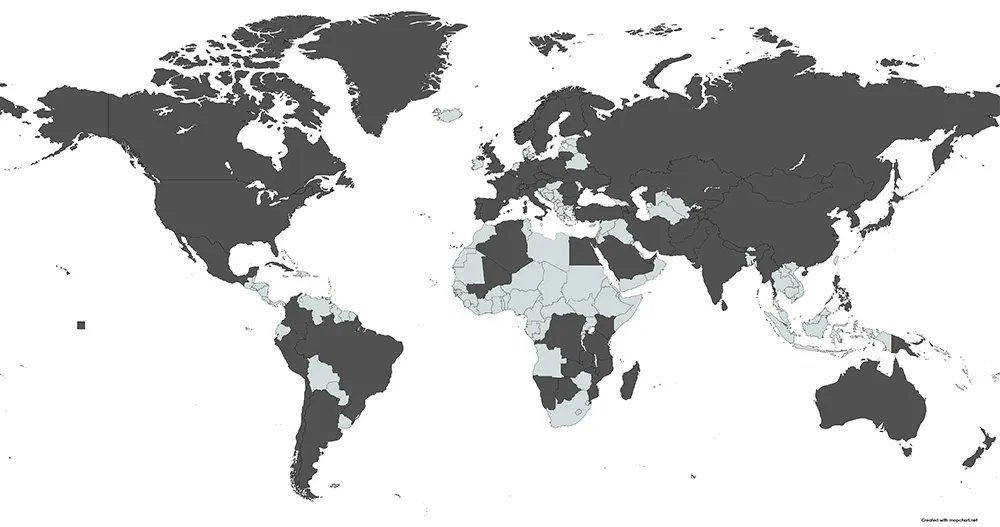
Physical Properties
| Mineral Group | Scapolite Group |
| Formula | Na4Al3Si9O24Cl |
| Color | Red, Orange, Yellow, Purple, Pink, White |
| Hardness (Mohs scale) | 5.5 – 6 |
| Refractive Index | 1.540 – 1.579 |
| Fracture | Conchoidal |
| Luster | Vitreous |
| Specific Gravity | 2.58 – 2.74 |
| Transparency | Transparent |
How To Tell If Scapolite Is Real?
It’s essential to make sure that the Scapolite you’re looking at is real. Following are some of the ways to test your gemstone’s authenticity.
- Color: Look for natural shifts in color, which are most common near the center of the crystal. If it is too evenly colored, it could be a synthetic stone. In addition, If the color is monotonous and lacks depth, there’s a good chance that what you’re looking at is not genuine.
- Acetone test: The acetone test is an excellent way to separate a genuine crystal from a fake one. Place your Scapolite gemstone in acetone for 15 minutes up to an hour. If the color comes off or is faded, then it is fake.
- Transparency: The transparency of a crystal can help you determine its authenticity. Scapolites are transparent or translucent gems. If you cannot see through your stone, it is not a genuine Scapolite.
If you are unable to verify the authenticity of your gemstone, you can always bring it to an expert for an appraisal. They test the crystalline properties of the material using various methods to verify its chemical composition and species.
Scapolite Value
The value of any gemstone varies in different places. In general, the cost of widely available gems comes mainly from the price of labor, so they are cheaper in third-world countries.
Meanwhile, the cost of rare gems is determined by the “4 C’s” of value established by various gemology institutes across the world.
The four C’s are as follows:
Carat
Size is one of the significant determinants of the price of any gemstone. The price per carat of any stone increases exponentially as the size of the stone increases. This is because larger stones are harder to find, mine, and properly cut.
The average size of Scapolites is around 5 Ct. However, most jewelry uses gems at most a few carats in weight.
Color
If a gem shows color, then the richness, continuity, and depth of the color become the main factor affecting its price.
Some stones also show patterns in their colors also end up increasing the price. Unique designs entice customers, which lets the vendors raise that piece’s price.
Clarity
If a gem is transparent, like a diamond, its clarity determines its value.
How clear it is, how many inclusions it has, and how many imperfections are in the structure are what define the clarity of a gemstone.
Cut
The majority of the labor cost for a gem is from the cutting process. Polishing a rough stone and creating facets on its surface that reflect light in the most efficient way possible to create stunning visuals is the essence of cutting.
Any well-cut gemstone will cost much more than a rough version of that same stone, even if it’s larger.
Scapolite Chakra Connection
Crown Chakra
Scapolite is mainly related to the Crown Chakra.
This is the seventh primary chakra in eastern philosophy. It is associated with spiritual enlightenment, pure love, and unconditional knowledge. It is located at the top of your head and deals with our connection to higher realms and our place in them.
Third Eye Chakra
Scapolite also has some connection with the Third Eye Chakra as well.
It is located in the center of your forehead and deals with psychic abilities and intuition. It also has to do with vision, imagination, and dreams.
Sacral Chakra
Although it may seem counter-intuitive, this gemstone has a faint relation with the Sacral chakra. Only red or orange Scapolites can be connected to this chakra.
The Sacral chakra is located at the level of your lower abdomen and deals with emotional healing, sexuality, creativity, passion, and intimacy. When this chakra is open, you will feel more connected to yourself and others.
Scapolite Meaning And Uses
Scapolite is a powerful stone that has various metaphysical uses. Some of them are as follows:
- It helps you to connect with your inner self and aligns your chakras.
- This gem is also said to help you access your higher self. It will allow you to see things from a different perspective, which can be helpful when dealing with challenges in life. This can be especially beneficial for those who need help understanding their purpose on earth or why certain things have happened.
- It is also said that this stone can help you achieve greater proficiency in mental tasks. This is especially helpful when you want to clear your mind and make it easier to focus on a particular goal or mission.
- It can help you eliminate negative energies from within and cleanse your aura. This can lead to creating new connections, emotional healing, and increasing self-confidence.
- Scapolites are used for personal development and spiritual growth. It can lead to new insights about yourself and the world around you. Furthermore, it is said to open your mind up to new possibilities in life, especially when solving problems and making decisions.
- It is a stone that can help you in spiritual growth, development, and evolution. Wearing this stone can lead you to appreciate your life more and allow you to see the beauty in the world around you.
- Scapolites are also said to help you to find inner peace, clarity, and love. It can be used for meditation or prayer by opening up your mind to new ideas and insights about yourself and the universe around you.
- These stones are also loosely related to passion and love. They are said to help you find your passion in life which can help you find meaning and live without any regrets.
How To Clean Scapolite Jewelry?
It is essential to maintain your jewelry on a daily basis. If you let it sit for a long time without any care, you may damage it. Cleaning it can help you extend the lifetime of your jewelry.
You can clean your Scapolite jewelry using the following steps.
- Dip the piece in a solution of soap and lukewarm water and let it rest for 10-15 minutes.
- After taking it out, wipe away any remaining dust or debris with a microfiber cloth, polishing it at the same time.
- If any remains, you can use a soft toothbrush to finish the job.
- It would be best if you also cleansed any negative energies from the gem by burning sage or giving it a feng shui fountain bath.
- After it is cleansed, you can recharge its mystical energy by returning it to mother nature, i.e., leave it under the full moon overnight or bury it under soft earth for a few hours.
It is important to note that you shouldn’t use hot water for cleaning as it is known to damage gemstones. Furthermore, ultrasonic cleaners are risky as well.
FAQ
Which Gemstones Go Best With Scapolite?
Scapolite is a beautiful crystal, but it can be pretty fragile. Therefore, if you wish to wear it as jewelry, it is best to pair it with stones that are more durable such as Almandine, Brazilian Emeralds, or Heliodor stones.
Almandine Garnet: Almandine is a red-colored variety of the Garnet supergroup with a 7.5 hardness rating. It is connected to the root chakra, which is the second chakra of the human body.
Brazilian Emerald: This stone is a green-colored variety of Tourmaline that calms the heart and enriches the soul. It has a rating of 7 on the Mohs hardness scale. The Brazilian Emerald is connected to the heart chakra and focuses your love in the right places, letting you live without any worries.
Heliodor Stone: Heliodor is a golden beryl stone with a hardness rating of 8. It fits well with the Scapolite stone and harmonizes with its properties. This gemstone is all about new beginnings and lets you pair with any gem quite well. Furthermore, it brings clarity to your mind, which lets you bring out the most from your Scapolite stone.
What Is Scapolite Good For?
Scapolite is suitable for connecting to a higher realm, opening up your mind, increasing your intuition, widening your imagination, and bringing passion to your life.
It is a multi-faceted stone that helps you in different areas of life.
What Are The Healing Properties Of Scapolite?
Alternate Medicine Practitioners use Scapolites for treating diseases of the mind. For example, it is said that Scapolite can help you heal PTSD and other mental disorders.
These stones are sometimes used to try and help war veterans and victims of trauma. They are also used by people who want to remove negative emotions from their lives.
This gem is also believed beneficial for people who have trouble concentrating on one thing at a time. Scapolites are also said to be useful for people who need motivation. They can help you focus on your goals and achieve them faster.
Scapolite is primarily a stone of the mind. It enhances your imagination, opens you up to new possibilities, and helps you reach higher realms.


